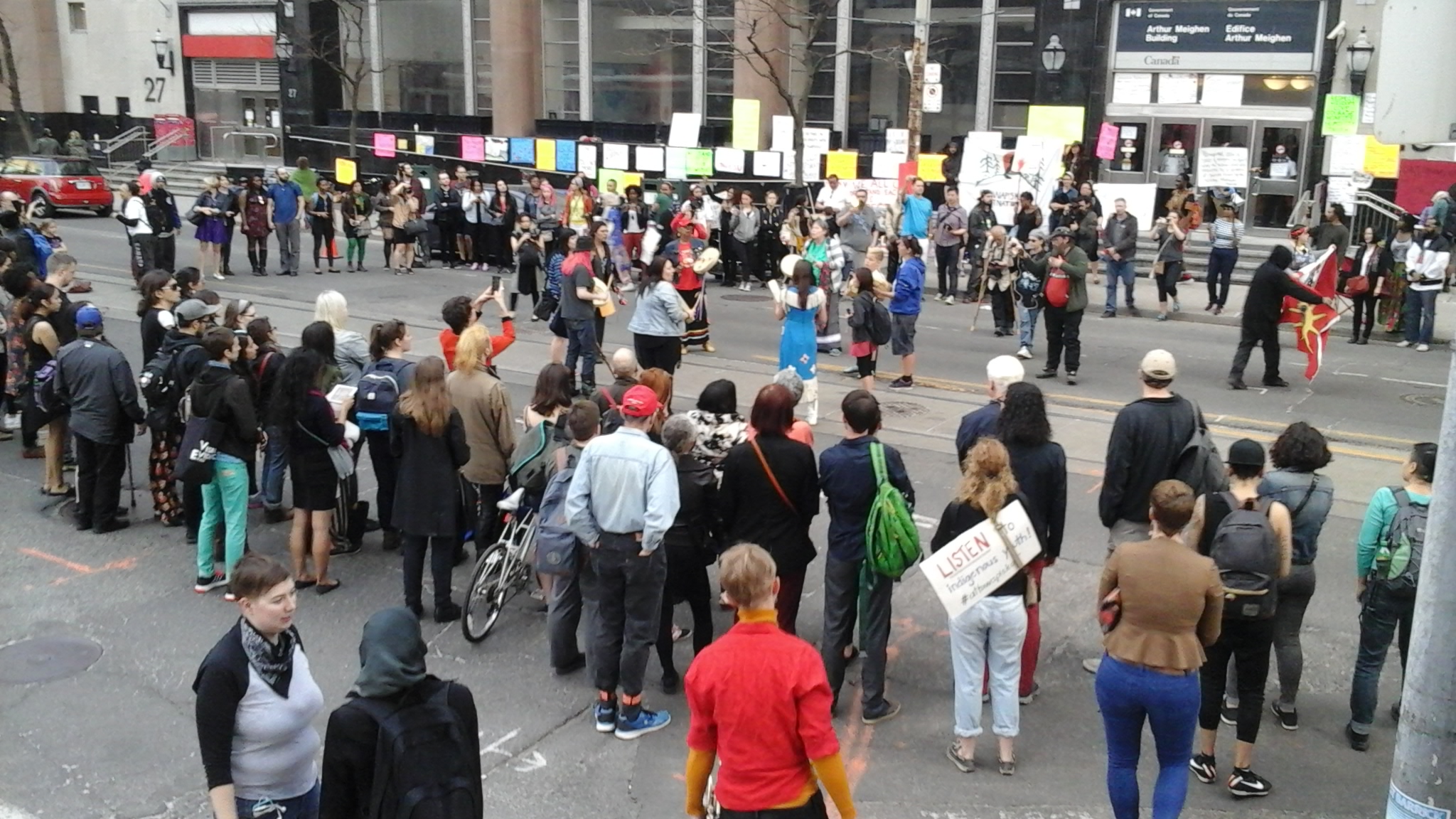Like this article? rabble is reader-supported journalism. Chip in to keep stories like these coming.
Just days before the occupation at the Indigenous and Northern Affairs (INAC) office in Toronto ended, photographer David Coombs took photos during a solidarity support rally in the early evening on Monday April 10, 2016.
Occupiers poked their head through the front door for some fresh air and food, as the bounty was plentiful, this is because Toronto also has a rich history of benevolence when it comes to food donations and a thriving chapter of Food Not Bombs.
It was also necessary since for a first few days of occupation, someone cut off air filtration, light and electricity and denied occupiers the use of building washrooms for alleged security reasons.
Sister occupations and actions occurred across Canada including Winnipeg, Regina and Vancouver. While each occupation or action was autonomous, they communicated and collaborated.
Toronto’s INAC office was the first to be occupied, ended peacefully on Thursday April 18, 2016, nine days after they began their occupation and after they received encouraging communications directly from the youth of Attawapiskat themselves.
It was in Toronto where the idea of the occupation was born, when after an employee on INAC walked away from a conversation with Indigenous rights activists about the pressing need to act now regarding crisis-levels of suicides on reserves, they chanted, “if you walk away, we stay!”
Vancouver’s INAC office was then occupied on Monday April 18, 2016, and shut down peacefully on Saturday April 23, 2016, after their demands to meet ministers from INAC in May were met. One of the other group’s demands were, “to see Cultural Connections for Aboriginal Youth re-established. The $22 million national program, which enhanced the economic, social and cultural lives of off-reserve youth, was cut by Stephen Harper’s Conservatives in 2012.”
Winnipeg activists are still occupying in their tents at the Winnipeg’s INAC office.
In solidarity with the other occupied locations and where sister actions are taking place, the message remains on point that to solve the “suicide problem” on Canadian reserves will mean much more than singling out one reserve to provide support, but instead needs to include a complete overhaul of the Indian Act and concrete and permanent measures in place to stop the disappearances and murders of Indigenous women.
We are all related. This stands true not only when it comes to relationships between humans, but also the relationship between us and the land, us and Mother Earth and us with our community, to just name a few.
And they each contribute to one another, as our worsening relationship to the land feeds into the mental health crisis as it impedes our ability to heal ourselves and one another.
Land is ceremony, so a disconnect there also has a worsening affect on mental health everywhere.
Like this article? rabble is reader-supported journalism. Chip in to keep stories like these coming.




